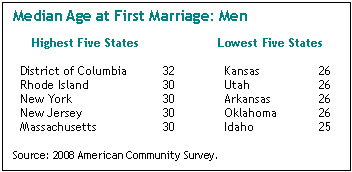True urbanism must come with a big tent

Photo by brownpau on Flickr.
Urbanists in the District and elsewhere often find themselves at odds with longtime elderly and working class residents who challenge our positions on transportation and planning. This unnecessary animosity is caused by a narrow-minded concept of urbanism that antagonizes families, the elderly and long-term residents.
Many urbanists seek greater density by revitalizing the built environment. These urbanists advocate for multi-use, human scale developments and multimodal transportation options, taking for granted that the in-migration and density that follow are good.
While density by itself naturally appeals to younger, more footloose residents, such architectural determinism casts a blind eye to those excluded from the benefits of city life when nothing changes but the built environment.
The recent news that the District’s black majority is rapidly slipping away has raised the anxiety many feel about such “hipster urbanism.”
Progressive ideas about cities would command a larger constituency if we instead practiced a big tent urbanism, starting from the premise that cities aren’t just denser suburbs.
Rather, cities are organisms that function fundamentally differently, expanding the range of real freedoms available to their citizens. Prominent amongst these are the freedom to interact with people of diverse backgrounds, the freedom to participate in culturally rich and deep communities, and the freedom to meet everyday needs in the safety and convenience of your community.
Density in and of itself doesn’t necessarily generate these benefits, as the early 20th century experience in U.S. cities demonstrates. The Achilles heel of hipster urbanism is architectural determinism which assumes that changes to the built environment lead to a better life for all residents.
Big tent urbanism seeks revitalized urban spaces, but only as a means, not an end. The end is to ensure that the people living in cities are actually experiencing the real freedoms that should follow from urban revitalization.
The Animosity is There
The division between “hipster urbanists” and their discontents is clearly evident, manifesting itself primarily in concerns about gentrification.
Two days after Vincent Gray defeated Adrian Fenty in the Democratic primary for DC Mayor last year, Post columnist Courtland Milloy castigated the “newly arrived creative class” that largely supported Fenty:
Watch them at the chic new eateries, Fenty’s hip newly arrived “creative class” firing up their “social media” networks whenever he’s under attack: Why should the mayor have to stop his work just to meet with some old biddies, they tweet. Who cares if the mayor is arrogant as long as he gets the job done? Myopic little twits.
While online commenters pushed back hard against Milloy, DC Councilmember Tommy Wells tweeted, “Courtland Milloy’s column should be read and re-read.”
I’ve read Milloy’s column several times, and have come to agree with Wells’ plea that Milloy not be dismissed. Milloy’s raw characterization of those most inclined to support Fenty’s urbanist policies raises unavoidable questions for those of us who identify as urbanists, particularly those who belong to the “hipster” demographic.
Of all the posts I’ve written for GGW, the two that triggered the most comments (mostly negative) advocated for unfolded strollers on Circulator buses and for Georgetown University to develop more on-campus housing to preserve the multi-generational character of the community.
Now, I may have been wrong in my positions, but it’s noteworthy that the two positions of mine that GGW commenters most resisted advocated for the interests of those other than childless young singles and couples.
How can we broaden the tent of urbanism? By broadening our view of urbanism itself.
Hipster Urbanism
For many, urbanism can be reduced to support for density irrespective of the consequences for communities. And they see these density increases as being enabled by free housing markets, denser residential and commercial developments, and more transportation options.
When NPR ran a story about gentrification in Anacostia, 5 GGW contributors, all of whom I respect immensely, wrote 2 articles dismissing the story. One contributor questioned whether what looks like gentrification isn’t really “just a family making a decision to sell and another family making a decision to buy”.
Another lauded the newcomers into Anacostia: “good for them for believing in a neighborhood in spite of its challenges, and for meeting its hurdles head on and its new amenities with a sense of excitement.”
While these fellow GGW contributors make the important point that the newcomers are middle and upper-class black just as often as they are white, recasting the issue as one of class just brings into sharper focus whose interests we appear to be advocating for.
Urbanists’ lack of concern for the effects of large-scale migration in cities, whether it is young middle-class professionals moving into Anacostia or students moving into Georgetown group homes, undermines the credibility of their ideas.
This lack of concern makes urbanism look to many like a front for the interests of the most footloose and unrooted in society - professional, childless singles and couples.
While this segment of society has always existed, over the past couple decades it has become a major demographic phenomenon. Manning Up: How the Rise of Women has Turned Men into Boys describes the effects of millions of twenty- and thirty-somethings’ decisions to delay marriage and children.
The delay of marriage and childbearing is particularly profound in the District of Columbia. No state has as high a median age of first marriage as the District, and no state has seen a larger increase in the median age of first birth (5.5 years) from 1970-2006.
Is urbanism’s recent success nothing more than the historic growth of this transient demographic? To Milloy and many others, it certainly appears that way.
Big Tent Urbanism
Urbanism can and should command a broader constituency, including families, the elderly and the poor and working-class. But this requires urbanism to aim for more than in-migration and density for their own sake, regardless of the consequences.
It’s critical to note that the leading urbanist thinkers associate urbanism with particular benefits of density, secured through smart planning and development, not with density itself. Prominent amongst the benefits that flow from density plus proper planning and development are the freedom to participate in diverse communities of cultural depth and richness.
Kunstler, Duany and Jacobs bemoan the damage done to cultural institutions sustained by cities as a result of suburban sprawl. Yet urbanists in DC don’t bemoan the loss of communities and cultural memory when neighborhoods turnover their residents - it’s just the free market at work.
These same authors praise the generational and socioeconomic diversity that is possible in cities. Jacobs writes that “cities have the capability of providing something for everybody, only because, and only when, they are created by everybody.”
Urbanism at its core argues that cities aren’t just denser suburbs. They are an organism that fundamentally functions differently and is able to expand the range of options and real freedoms available to people.
But when urbanist policies for enabling such cities are limited to the built environment, they commit the sin of architectural determinism which limits those options and reduces freedom. This myopic view of development has steamrolled communities, and thus undermined urbanism, ever since Baron Haussmann’s 19th century renovation of Paris displaced poor and working-class Parisians to the outskirts of the city.
Development that focuses on people, not places, employs all tools of development in order to expand the real options available to people. Revitalizing the built environment for greater density is very important as a means to expanding the freedoms available to people, but it is not the end itself.
If other tools of development aren’t employed, then the diversity of culturally deep communities available to urban residents is quickly lost and the range of people who can benefit from revitalized spaces is reduced to a lucky few.
This broader, people-centered view of development was articulated by Amartya Sen in his Development as Freedom, which has become a landmark in development theory. Sen argues:
If freedom is what development advances, then there is a major argument for concentrating on that overarching objective, rather than on some particular means, or some specially chosen list of instruments.
Any self-identified urbanist in the District who has nothing to say to its 30% of children in poverty, or the 30% of out-of-work Ward 8 residents, cannot rightly claim the mantle of urbanism and deserves any backlash he or she receives.
Smart-growth policies must benefit all residents, or else be they will be rightfully viewed as the tyranny of one class of people over another. We should stop supporting change that does not benefit all residents, as the heart of urbanism is the expansion of the real freedoms made possible by cities.

